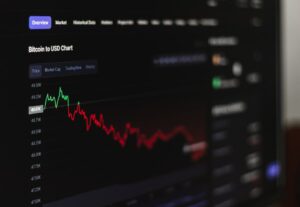Forex trading is a complex and dynamic market that requires careful analysis and strategic decision-making. One of the most common ways traders enter the forex market is by placing sell limit orders. A sell limit order is an order to sell a currency pair at a specified price or higher. While it can be a powerful tool for forex traders, there are several common mistakes that traders should avoid when placing sell limit orders. In this article, we will discuss five of these mistakes and provide tips on how to avoid them.
Mistake #1: Placing Sell Limit Orders Without Proper Analysis
One of the biggest mistakes traders make when placing sell limit orders is not conducting proper analysis. It is crucial to analyze the forex market before placing any order. Traders should consider factors such as market trends, support and resistance levels, and economic indicators. Without proper analysis, traders may place sell limit orders at inappropriate levels, leading to missed opportunities or unnecessary losses.
To avoid this mistake, traders should spend time analyzing the market. They can use technical analysis tools such as trend lines, moving averages, and oscillators to identify potential entry points. Additionally, staying updated with relevant news and economic events can help traders make informed decisions when placing sell limit orders.
Mistake #2: Setting Unrealistic Sell Limit Order Prices
Another common mistake traders make is setting unrealistic sell limit order prices. It is important to set sell limit orders at a level that is reasonable and achievable based on market conditions. Placing sell limit orders at extremely high prices may result in missed opportunities if the market does not reach those levels.
To avoid this mistake, traders should set sell limit order prices based on technical analysis and market conditions. They can consider recent price levels, support and resistance zones, and key Fibonacci retracement levels to determine realistic sell limit order prices. This approach increases the likelihood of executing the order and capitalizing on potential profits.
Mistake #3: Placing Sell Limit Orders Without Stop Loss Orders
Stop loss orders are essential risk management tools that help limit potential losses in forex trading. Unfortunately, some traders make the mistake of placing sell limit orders without setting stop loss orders. This exposes them to significant risks, as unexpected market movements can lead to substantial losses.
To avoid this mistake, traders should always set stop loss orders when placing sell limit orders. Stop loss orders should be placed at a level that limits potential losses but also allows for some market volatility. Traders can use technical analysis tools, such as support and resistance levels, to determine appropriate stop loss levels. By using stop loss orders, traders can protect their capital and minimize the impact of adverse market movements.
Mistake #4: Ignoring Fundamental Analysis
While technical analysis is crucial in forex trading, traders should not ignore fundamental analysis when placing sell limit orders. Fundamental analysis involves analyzing economic indicators, news events, and geopolitical factors that can influence currency prices. Ignoring fundamental analysis can lead to missed opportunities or unexpected losses.
To avoid this mistake, traders should consider both technical and fundamental analysis when placing sell limit orders. They should stay updated with economic calendars and news releases that can impact the forex market. By combining technical and fundamental analysis, traders can make more informed decisions and increase the chances of successful sell limit order placements.
Mistake #5: Overlooking Market Volatility
Market volatility is a fundamental aspect of forex trading. However, some traders overlook market volatility when placing sell limit orders. They fail to consider that currency prices can fluctuate significantly within short periods, leading to missed sell limit order executions.
To avoid this mistake, traders should be aware of market volatility and adjust their sell limit order prices accordingly. Placing sell limit orders too close to the market price may result in frequent executions due to temporary price fluctuations. On the other hand, setting sell limit orders too far from the market price may lead to missed opportunities. Traders should find a balance by considering recent price movements and volatility levels when determining sell limit order prices.
In conclusion, placing sell limit orders in forex trading requires careful analysis and strategic decision-making. By avoiding common mistakes such as placing orders without analysis, setting unrealistic prices, ignoring stop loss orders, overlooking fundamental analysis, and overlooking market volatility, traders can increase their chances of successful sell limit order placements. By understanding and learning from these mistakes, traders can improve their overall trading performance and achieve their forex trading goals.






